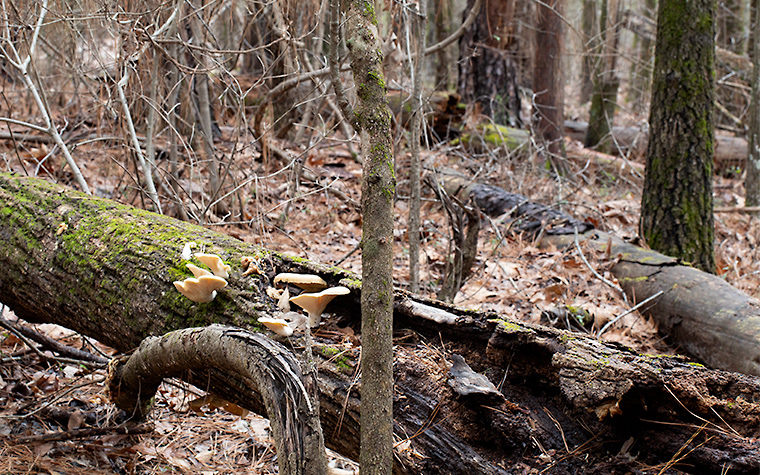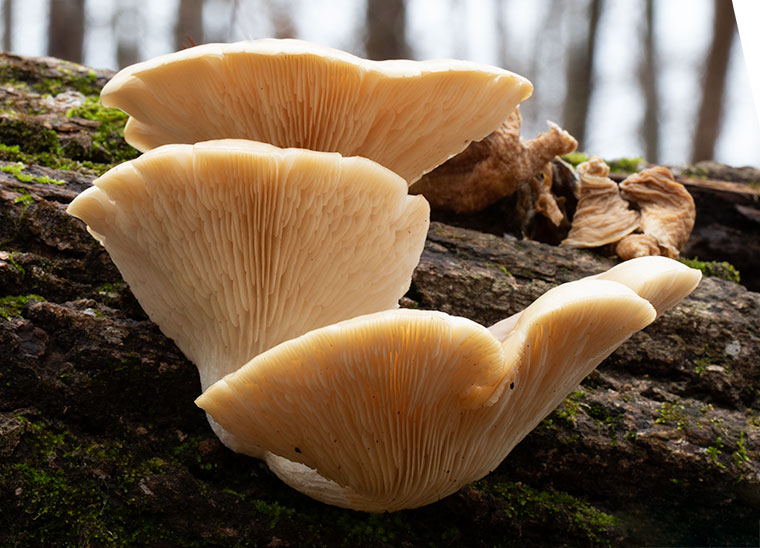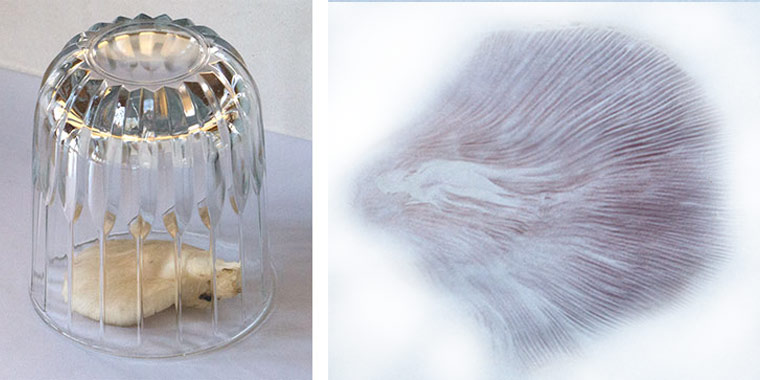Dead logs are great things to have in ones woods. All sorts of creatures favor this habitat. I was walking through my woods the other day when I spotted some mushrooms growing on a downed Tulip Poplar (Liriodenedron tulipifera) tree. They were oysters: Oyster Mushrooms (Pleurotus ostreatus), that is.

When inspected more closely, these mushrooms tendency to appear in tiers is evident. Large mushrooms that grow on dead trees may release their spores through pores, tubes or gills on the undersides of the mushroom itself. These clearly have gills. Growth in tiers on dead or dying trees, the white color, and the appearance of gills rather than pores goes a long way toward identifying these as Oyster Mushrooms . Different authors give different stories about the origin of the common name. They are called Oyster Mushrooms because the shape of the fruiting body resembles the shape of a marine oyster or because the tiers of Oyster Mushrooms resemble a cluster of marine oysters.

The gills show clearly in the photograph above. Oyster Mushrooms may appear in a variety of tones; some are pure white to gray-brown. The white ones tend to turn yellowish as they age, as have those in the preceding photograph. Oyster Mushrooms grow on a wide variety of hosts, including Tulip Poplar, as in these pictured, maples, hickories, and magnolias. They are also cultivated commercially.
Oyster Mushrooms are quite good to eat. In fact I ate some of the ones that appeared on this log a bit earlier. It is nice to find, in the middle of winter, a mushroom that is a choice edible. As always, be absolutely sure of what you pick and eat. It is best to consult someone who has experience identifying wild mushrooms. Fortunately, Oyster Mushrooms are relatively distinctive. However, other, somewhat similar white mushrooms can be found on decaying logs, including species of Crepiotus, and these are poisonous! If in doubt, you can do a spore print, as in the photograph below, which is taken from an earlier post where I found Oyster Mushrooms growing on an erect, but dying tree.
To obtain a spore print, put one of the fruiting bodies under a glass on a white sheet of paper. After a few hours, enough spores will have fallen onto the paper to produce a spore print. With this technique it is possible to see the color of the spores, and often the pattern of the gills or pores. Oyster Mushrooms should have spores that are white to pale lilac-grey.

